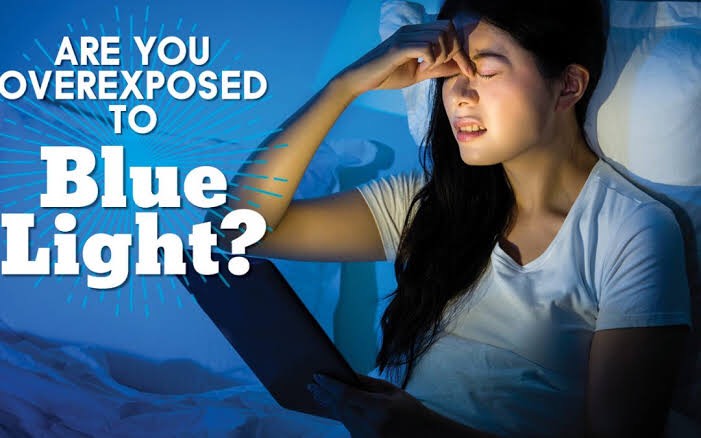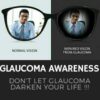WHAT IS BLUE LIGHT, AND HOW DOES IT AFFECT OUR EYES?
Blue light, like other colours of visible light, is all around you. The sun emits blue light. So do fluorescent and incandescent light bulbs. Human beings are exposed to more blue light than ever because of the widespread use of devices that rely on light-emitting diode (LED) technology.
Computer and laptop screens, flat-screen televisions, cell phones, and tablets all use LED technologies with high amounts of blue light.
WHAT DOES BLUE LIGHT DO TO YOUR EYES?
Your eye is equipped with structures that protect it from some kinds of light. Your cornea and lens protect the light-sensitive retina at the back of your eye from damaging UV rays, for example.
Those structures don’t keep out blue light. And you are exposed to a lot of it, the natural blue light from the sun far exceeds the amount from any one device, thereby causing damages at the back of the eyes.
[ngg src=”galleries” ids=”2″ display=”basic_thumbnail” override_thumbnail_settings=”1″ number_of_columns=”3″]
BLUE LIGHT AND MACULAR DEGENERATION
Age-related macular degeneration (AMD) is the number one cause of vision loss in people over 50 years old, according to the American Academy of Ophthalmology (AAO). It happens when a structure in the back of your eye, the macula, becomes damaged as you get older and as a result of exposure to blue light over time.
The result is that you lose the ability to see the centre of your field of vision. You may still be able to see things on the periphery. But details and objects in the centre of your vision lines may become blurry and, over time, more difficult to see.
BLUE LIGHT AND DIGITAL EYESTRAIN
Using digital devices for long periods can lead to digital eyestrain.
Research has shown that when people use computers, laptops, and other digital devices, they tend to blink less often than normal. Fewer blinks can mean less moisture.
Digital eyestrain means different things to different people, but is generally related to the focusing system of the eyes.
When your eyes are strained from staring at a blue-light-emitting screen, it results to:
- Dry eyes
- Irritated eyes
- Tired eyes
- Headaches
- Facial muscles fatigued by squinting.
Blue light scatters more easily than most other visible light. This makes it difficult for your eye to focus when receiving blue light. Instead, your eye may digest blue light as poorly focused visual static. This reduction in contrast may make it more difficult for your eye to process blue light, potentially contributing to eyestrain.
HOW TO LIMIT BLUE LIGHT EXPOSURE
The AAO recommends that you take the steps below to reduce digital eyestrain:
1) Practice the 20/20/20 strategy.
While you are using a device that emits blue light, stop every 20 minutes to focus on objects that are around 20 feet away. Study those objects for 20 seconds before you return to your up-close viewing.
2) Keep your eyes moist.
Eye drops, such as artificial tears, and room humidifiers are all good ways to keep your eyes from becoming too dry and irritated while you are using blue-light-emitting devices.
3) Use eyeglasses with the right prescription that also has blue light lens protection



